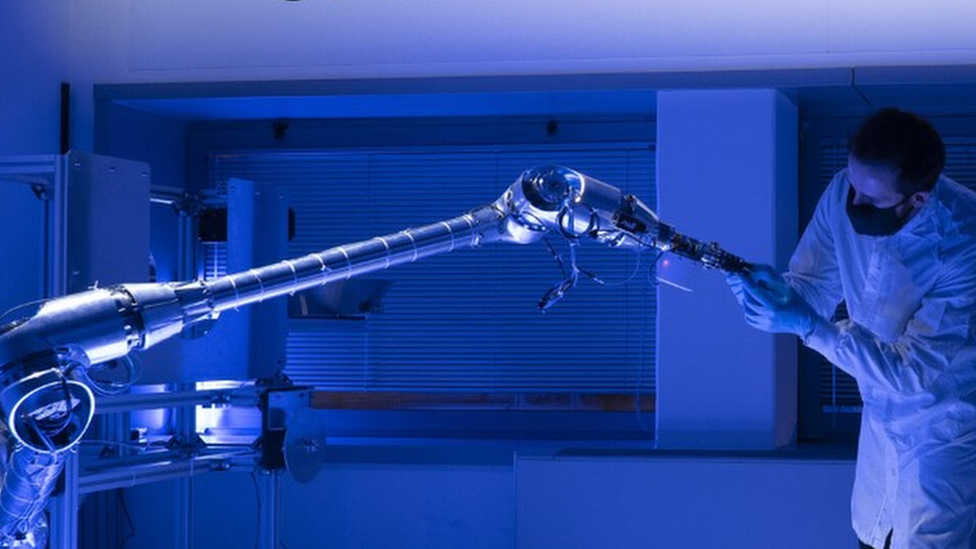Perseverance: Mars rock could be clue to life on red planet
- Published

Perseverance's mission is to drill rocks and store samples for later return to Earth laboratories
Nasa's Perseverance mission has been full of twists and turns ever since its rover landed on Mars in February last year.
From its nail-biting touchdown, to accidentally swallowing a pebble - this rover's near $3 billion (£2.6 billion) quest has had its share of ups and downs.
Now it seems as if the Perseverance rover is closer than ever to completing one of its most important tasks - finding clues to prove if life once existed on Mars!
Nasa has revealed that the rover has found and collected two of its most interesting samples to date, with scientists suggesting this could be the key to discovering ancient Martian microbes - or signs of life.
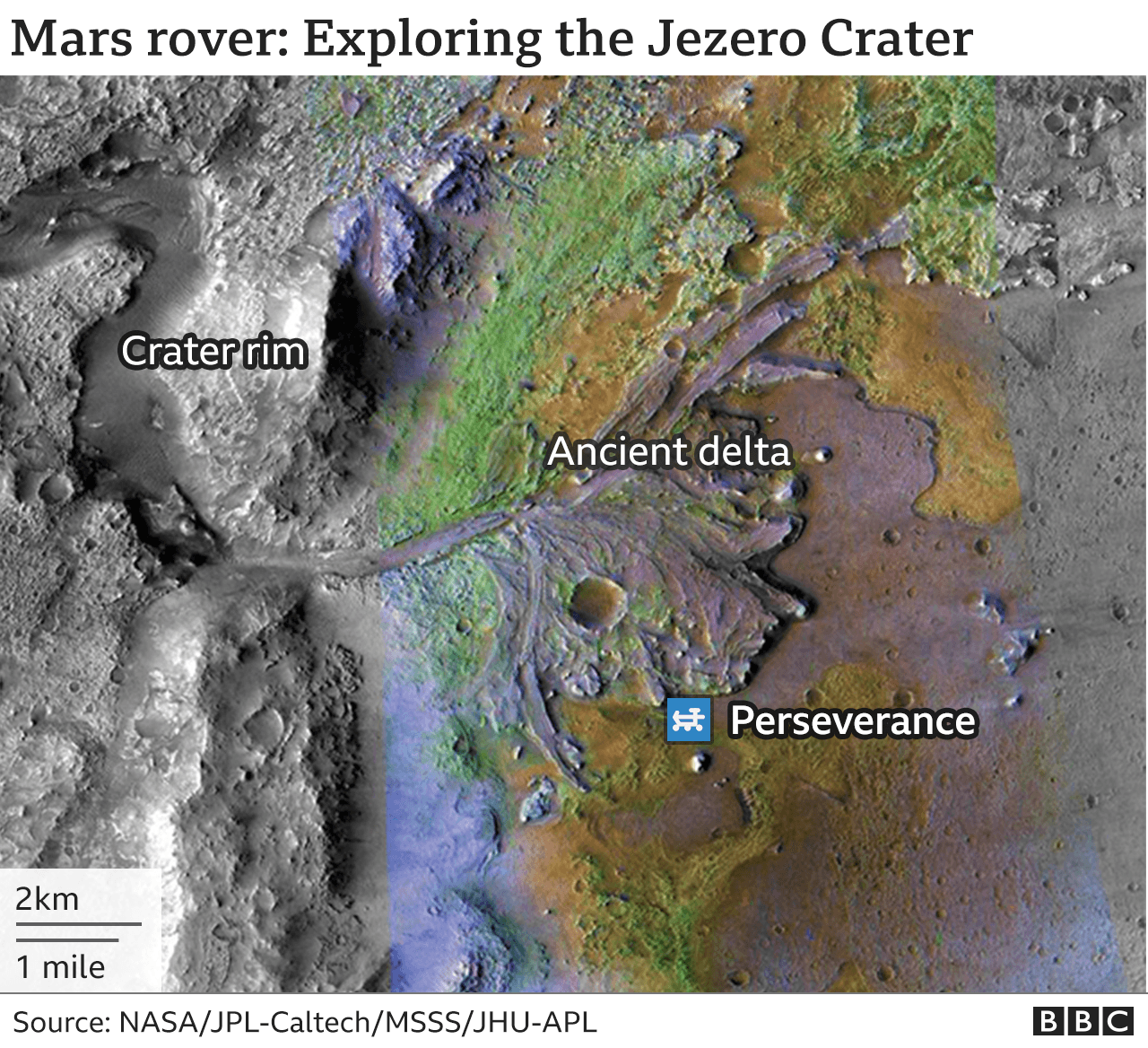
For the past 17 months, the rover - known to those who love it best as "Percy" - has been travelling across a deep crater positioned near the planet's equator.
One of Percy's main jobs has been to drill into the ground, collecting samples of rock and dust from this crater. It's hoped the samples will then be returned to Earth for intense analysis.
And Percy's latest sample collection has got mission scientists really excited!
"I think it's safe to say that these are two of the most important samples that we'll collect on this mission," said Professor David Shuster of the University of California, Berkeley.
The samples of rock were collected from an area called Wildcat Ridge.
Studies of this area suggests that it contains a higher amount of organic molecules compared to other areas of the crater that have been explored by Percy- which could point to ancient life.
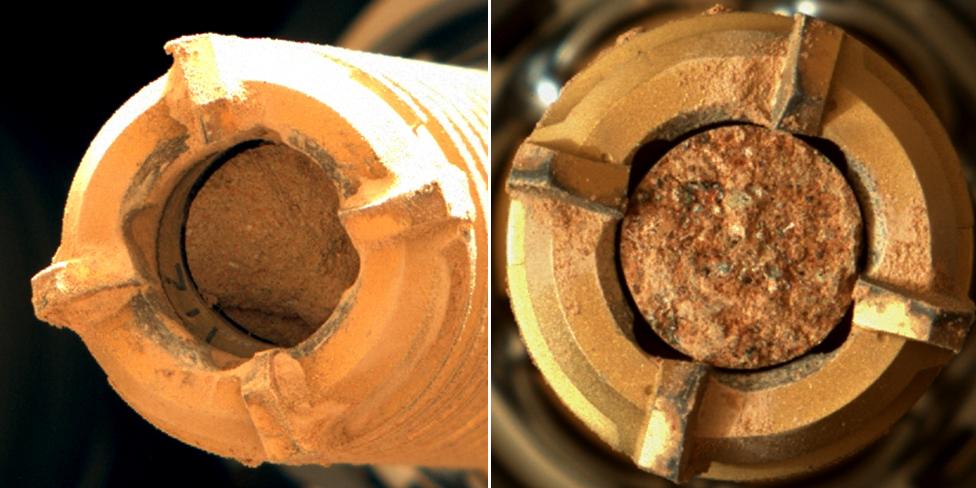
Looking at the sedimentary core samples drilled by Perseverance, with a sample from Wildcat Ridge collected on the left
Scientists stress that it's very unlikely that there are any living organisms on Mars currently.
This is because the climate of the planet today makes it nearly impossible to support life.
But that doesn't mean that the planet wasn't able to support life billions of years ago, when its climate was very different.
Satellite images suggest that the crater where the rover is currently collecting samples was at one time a giant body of water which could have been full of microscopic life!
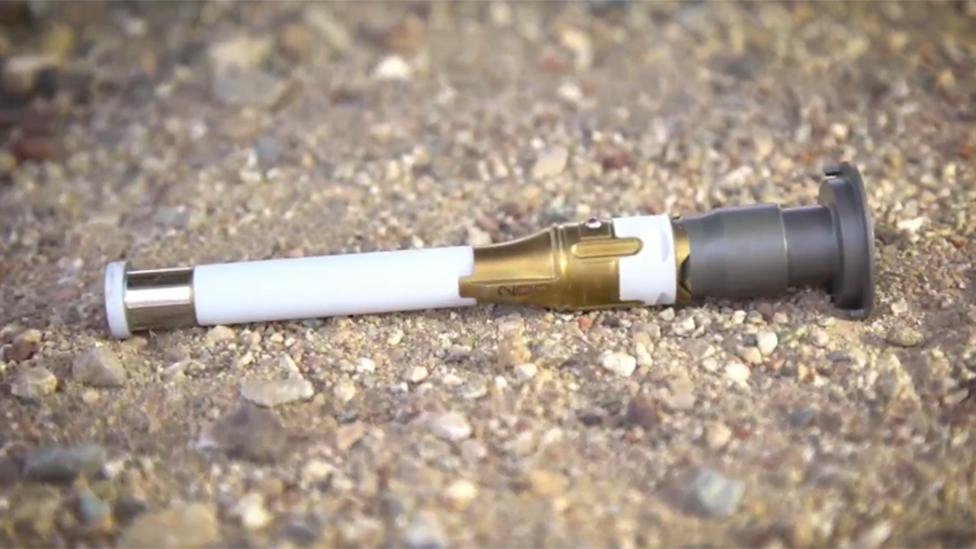
Once the samples have been collected by the rover they are dropped on the surface of Mars
But if these latest samples do hold clues to life on Mars, it'll be a long time before we know for sure!
The samples aren't expected to return to Earth until 2033 at the earliest - and that return will be huge mission in itself.
For now Percy the rover will continue its roving.
- Published19 February 2021

- Published6 March 2021
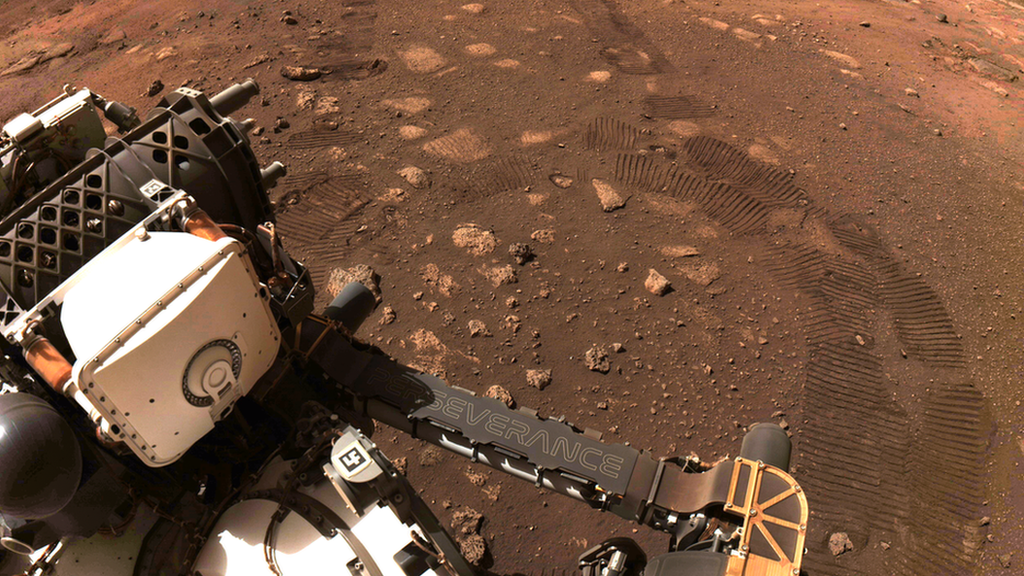
- Published21 July 2022
